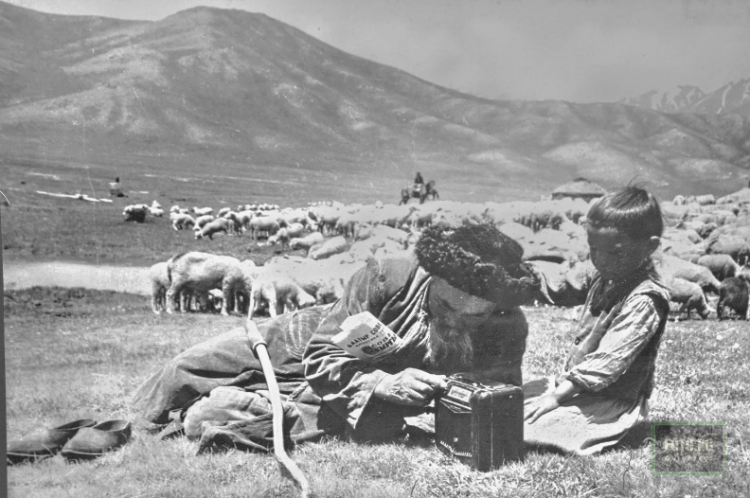In 2025, the area allocated for sugar beet in the Chui region amounted to 1,559 hectares, as...

Thanks to the selfless labor of collective farm workers, MTS employees, and state farm workers,...

The party, Soviet, land authorities, and leaders of collective and state farms did everything...

Borbieva Nurtai Cinematographer. Honored Worker of Culture of the Kirghiz SSR (1979). Born on...

The Rear in Kyrgyzstan Industry. A significant part of the European territory of the USSR was at...
In 2025, Kyrgyzstan will face a decrease in sugar production volumes due to unfavorable weather...

The sudden attack of fascist Germany and the unfavorable development of military actions on the...

The industrial enterprises provided significant assistance in supplying spare parts to the...

Termechikov Aziz Junushalievich (1936-1992), Doctor of Economic Sciences (1986), Professor (1989)...

Akimaliev Dzhamin (1936), Doctor of Agricultural Sciences (1981), Professor (1982), Academician of...

Kadyraliev Asker Kadyralievich (1937-1994), Doctor of Medical Sciences (1980) Kyrgyz. Born in the...

Pechinov Vladimir Arsentievich (1934), Doctor of Biological Sciences (1973), Professor (1978),...

Turdukulov Asker Turdukulovich (1936), Doctor of Geological and Mineralogical Sciences (1984),...

In April 1942, the Soviet People's Commissariat and the Central Committee of the VKP(b) of...

MAMADALIEV Sagynbek Dozalievich...

SADYROV Suran Zhurashovich...

Abdiev Musa Costume designer. Born on February 23, 1934, in the collective farm named after Karl...

Assigning exceptional political and economic significance to the unprecedented rise in the...

Sharshen Termechikov (1896—1942) — a popular comic-satirist, honored artist of the Kyrgyz SSR,...

DECISION OF THE EXECUTIVE COMMITTEE OF THE FRUNZE CITY COUNCIL OF WORKING DEPUTIES ON THE...

Hero of the Soviet Union Shopokov Duyshenkul Duyshenkul Shopokov was born in 1913 in the village...

THE NEW OF THE OLD STREET OF THE BANK There is an unremarkable street in the city. Almost entirely...

Usubaliev Sharshenaly Usubalievich Organizer of film production. Member of the Communist Party of...

Kyrgyzstan on the Eve of the Great Patriotic War Alongside the expansion of the industrial base,...

Tabyshaliev Salmorbek (1928-1993), Doctor of Historical Sciences (1970), Professor (1970),...

Prose writer A. Tekinaev was born on January 20, 1942, in the village of Alchaluu, Chui region of...

SHERALIEV Tokon Matkasymovich...

Imankulov Beishen Imankulovich Doctor of Chemical Sciences, Professor, Academician of the National...

Prose writer F. Samokhin was born in the village of Verkhne-Sadovskoye, Lower-Chirsky District of...

Usubaliev Zhenishbek (1942), Candidate of Technical Sciences (1972), Professor (1999), Laureate of...

Prose writer J. Sharshiev was born on July 17, 1942, in the village of Ak-Beshim, Chui region,...

Poet and prose writer Sh. Esengulov was born on March 22, 1940, in the village of Kairma, Jumgal...

The results of 1941 indicate the enormous economic potential of the collective farms and state...

Agriculture during the War Period In writing the chapter and section on the agriculture of...

Abdykalykov Akymbek (1957), Doctor of Technical Sciences (2001)...

Poet M. Akimkodzhoev was born in the village of Bazar-Turuk in the Jumgal district of Naryn region...

SULAYMANOV Sherali Toktosunovich...

In collaboration with the district party committees, relying on the rural activists, the political...

Arapov Bayysh (1942), Doctor of Physical and Mathematical Sciences (1993), Professor (1995)...

Daniyarov Bazarkul (1897-1942) - educator, scholar-pedagogue, political figure....

Animal Husbandry The main direction in the multi-sector agricultural production of Kyrgyzstan was...

Boo-Terek (until 2001 — Klyuchevka) is a village in the Bakai-Ata District of the Talas Region of...

Beksalov Esengeldi Beksalovich (1942), Doctor of Technical Sciences (1987). Kazakh. Born in the...

Tekenev Zhapар (1933), Doctor of Technical Sciences (1991), Professor (1994), Corresponding Member...

RESOLUTION OF THE COUNCIL OF PEOPLE'S COMMISSARS OF THE KYRGYZ SSR "ON THE CONSTRUCTION...
Journey through the Terskey Alatau and Tian Shan...